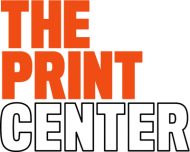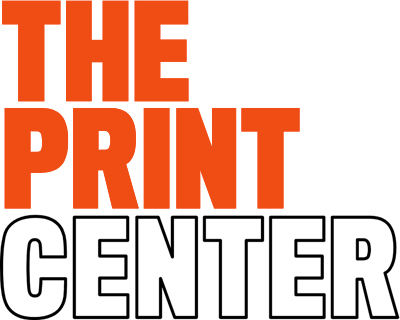In advance of the 97th ANNUAL deadline of June 15th, we asked jurors Dr. Makeda Best and Curlee Raven Holton four questions.
Dr. Makeda Best
You are a leading scholar and curator of photography. What initially brought you to the field?
I saw the Eyes on the Prize public television series every year as a young person in elementary school, and I got really interested in and really inspired by how images were used in in those documentaries, and how photographic images had been used historically. Later on in my teen years, I started to discover more photography. I read a lot of magazines. Vanity Fair was a really important publication for me to see photography. My parents also took me to museums at the time. Though, I didn't really know the history of photography, and I was just getting interested in art. I saw a few really important exhibitions – one of Carrie Mae Weems’ works in an exhibition at SFMOMA and a touring exhibition of works by Brian Lanker called I Dream a World, portraits of African American women. I was really get drawn to those works, and I started making photographs of my, but I still didn't really know the history – didn't really know that there was a history. I hadn't been exposed that until college when I took a course on the history of photography. That was when this whole world opened up to me. After college, I enrolled in art school and for my MFA at Cal Arts. I thought I would make photographs, but I probably always knew that I really wanted to be a historian of photography, so that shifted and I with the other way.
When reviewing a wide range of work for a competition like this, what do you take into consideration? Form? Process? Content? All of the above?
Typically, it becomes very apparent very quickly that somebody has a very strong perspective, that they have a strong sense of what they want to do in their work and that comes through. So, it is probably “all of the above,” although first and foremost, it really is a clarity of vision and perspective. One of the greatest pleasures of my work is to say, “Here's someone, and they have a really strong vision,” and to be able to elevate that is just of the great joys. We spoke about the art school earlier on, and that’s what I learned at Cal Arts. Somebody showed up, and they were in the photo program. but they may not have even being making any photos. People were doing performances! They sometimes weren’t even making anything. They were talking about things they were thinking about. You had to show up, and you had to talk about it – for hours, and so that really taught me how to connect with people. It’s better in person, of course, but it's always inspiring to connect with new art and see what people are doing, and what they're making of this moment. Painting and sculpture is probably hard for me, but anything on paper, I can do. I am very much interested in seriality and materiality, and works on paper as objects that really circulate and reflect our times.
What projects are you excited to be working on right now and/or in the coming months?
I’m really excited about a collaboration I’m working on with the Darrel Ellis Estate to bring a small exhibition of Ellis’ works to the Carpenter Center for the Visual Arts at Harvard that I’m curating in spring 2023. This fall, along with Kevin Moore, I am co-curator of the Focused Biennial exhibition On the Line: Documents of Risk and Faith, and that opens in Cincinnati at the Contemporary Arts Center on September 9th. It's really going to be an incredible show, mixing photography and thinking about the document and performance, the contemporary world. It’s really fascinating work, and a great group of artist, so it's been exciting to work with Kevin on that project for the past two years. Then I’m just working on my own writing and research projects. I just finished major exhibition. and so I’m thinking about what's next, and what's going to connect with that and continue the ideas that I started there.
How has photography – or the arts in general – changed as a result of the pandemic?
That's a huge question! I think what's changing, or I hope what’s changing, is our institutions. For many years I’ve also been involved with the group of women-identified curators thinking about changing museums. If we're talking about the arts, it is probably
Institutions that are, hopefully, trying to think about what their work means, and how to serve and collaborate, and how to exist in ways that that mirror the complexity of our world but also to be spaces that are valued in society that can, as a lot of people say, “hold” space – for ambiguity, challenging material and celebrations as well. I think that, of course, we we've all learned to be a little bit nimbler, but maybe we've also connected in ways that we, you know, like others in the in the pandemic, I mean we're connecting this way [via Zoom]. We've discovered new people and new work, so I think that connection has also been important. I hope we've all become a little bit more empathetic and humble.
Curlee Raven Holton
You wear many hats – artist; professor; founder of the Experimental Printmaking Institute (EPI) at Lafayette College on Easton, PA; printer, publisher, and founder of Raven Fine Art Editions; Executive Director of the David C. Driskell Center for the Study of the Visual Arts and Culture of African Americans and the African Diaspora at University of Maryland-College Park, to name just a few. What initially brought you to the field?
I was a student at Cleveland Institute of Art in Cleveland, Ohio, and a local community activist was recruiting artists to make a print to help support the ANC – the African National Congress. This was during apartheid, during the early eighties – maybe even a little earlier than that. I had no knowledge of printmaking, as I had been involved with primarily drawing and painting, and so in the evenings I would go into the printshop and ask students who were printmakers to help me make a print. I was first introduced to print making through lithography, and it really struck me because it was doing two things for me. One, it was allowing me to share my artwork with a large audience because of making a multiple. Two, it was accessible to the community, as I realized it was one of the most democratic forms of artmaking. It stands in contrast to that singular painting, divine intervention coming into the artist's head while he's in the studio making this great painting. Printmaking is based upon this notion of multiples, sharing, affordability, so it was very much about my own principles in my community. So it allowed me to connect with the community.
When reviewing a wide range of work for a competition like this, what do you take into consideration? Form? Process? Content? All of the above?
I think about what the artist is talking about. I always ask myself this question when I’m looking at something: What am I seeing? So, am I looking at a painting? Am I looking at a print? And then what is the subject matter? What has the artist chosen, as subject? And then how has that artist communicated that subject in a unique way? And I think what also is underneath all of this for me is an understanding – and this has taken me a long time to come to this clarity about my own practice – all artmaking, and most of all our activity as humans, is based on a sense of anxiety of existing. So, a work of art to me is an expression of that anxiety, a negotiation of that anxiety. How aware is that artist of the anxiety, and how much does that work of art embody that anxiety? That really gets to me quickly. That’s what strikes me. And this is not always so obvious to the artist in their practice.
What projects are you excited to be working on right now and/or in the coming months?
I’ve been doing some new work! I don't always work every day in the studio, but I’m always ruminating about it. I’m always making. I make small sketches. And I'm doing a series now of new sepia ink drawings on panel that will become large sepia ink washes on boards. I'm really interested in that kind of fluidity, the softness, the ambiguity that the medium can give you. I’m talking about ghosts right now, ghosts and death. What I mean by ghosts: ghosts are the echoes of unresolved memories or unresolved events. They can sometimes be personal but sometimes can be very public. I'll give you an example: we deal with in our culture right now a lot of events that happened in the past that have come forward, and we're trying to reconcile them. There's some members in our community don't want those addressed or reconciled because that's history. Some want them addressed and reconciled. Why would they want them addressed and reckoned out? Because those memories are unresolved, and that's what ghosts are – evidence of unresolved memories.
How has printmaking – or the arts in general – changed as a result of the pandemic?
[During the height of the pandemic] I was at the University of Maryland, at the David C. Driskell Center [was closed], so we were working virtually at home all the time, so it gave you more time to actually do your work quietly. And not only that, we were not accepting any visitors to the studio or the workshop, so you realize, “Wow, you know, it could be quiet all the time!,” and I like solitude. That was rewarding. The absence of stimuli and activity for me was beneficial because it allowed us to realize how much we were doing that we really didn't have to do, you know – we were filling in space. So now, we're at home all day, perhaps with our children, and being mindful of who we’re interacting with. That slows you down…

